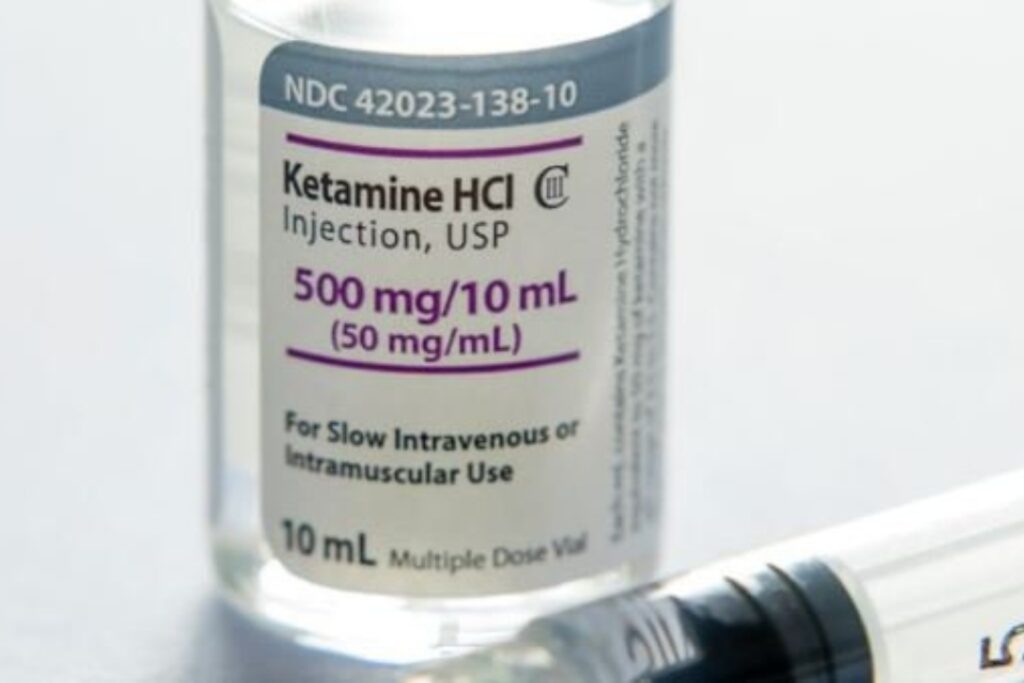The tragic loss of Matthew Perry by consumptions of Ketamine of has cast a sad light on the circumstances surrounding the “Friends” star’s untimely death. An autopsy report released by the Los Angeles County Medical Examiner divulged distressing details, attributing Perry’s demise at the age of 54 to the acute impact of ketamine, a potent sedative, and a combination of other contributing factors that led to his accidental drowning in his home’s hot tub.
Ketamine’s Acute Effects in Matthew Perry’s Passing:
The report unveiled concerning findings, underscoring high levels of ketamine—a swift-acting anaesthetic recognized for its hallucinogenic properties—within Perry’s system. These concentrations, typically associated with monitored surgical anaesthesia, exacerbated his heart rate while impeding breathing, ultimately inducing unconsciousness and leading to a tragic drowning incident in the hot tub.
Notably, Matthew Perry had openly acknowledged his prolonged struggle with substance abuse, a battle spanning decades. The autopsy attributed his cause of death to the acute effects of ketamine, alongside the impact of coronary artery disease, the opioid-addiction medicine buprenorphine, and the drowning itself, all contributing factors to the unfortunate accident.
What is ketamine ?
Strong medicine ketamine is most known for its application as an anesthetic in healthcare field. It is a member of the group of medications known as dissociative anesthetics, which can cause memory loss, sleepiness and a trance like state.
Ketamine was first developed as a veterinary and human anesthetic. Because of its quick start of effect, it is frequently utilized in medical procedures, particularly in emergency situations. It functions by relaxing the body, obstructing sensory awareness and relieving pain.

Apart from medicinal uses, ketamine is regarded as a recreational drug due to its hallucinatory qualities. Because of its dissociative effects, one may feel detached from reality and experience hallucinations, altered perceptions and out of body experiences. This feature has caused it to be abused as a recreational drug, especially when combined with other illegal drugs.
Related Article: Matthew Perry’s death Reverberates Worldwide: Tribute to a ‘Friends’ Icon
The specific mode of ketamine intake remains unknown, although trace amounts were found in his stomach, and no recent needle marks were evident on his body. This dissociative anaesthetic hallucinogen, known for its pain-relieving and anxiety-detaching qualities, can be consumed in various forms—via injection, liquid mixture, powder inhalation, or smoking, as detailed by the U.S. Drug Enforcement Administration.
The autopsy suggested a possibility of Matthew Perry self-medicating with ketamine between supervised treatments for depression and anxiety. However, the last recorded treatment occurred a week and a half before his passing, indicating that the ketamine found posthumously was introduced after this session.
His passing transpired nearly a year following the publication of his memoir, “Friends, Lovers, and the Big Terrible Thing,” recounting his protracted struggles with prescription painkillers and alcohol. These circumstances nearly claimed his life on multiple occasions. Interviews cited in the autopsy revealed Perry’s sobriety for 19 months before his tragic demise, marking a substantial period of recovery with no known substance abuse relapses.
Remarkably, investigators found no traces of alcohol, illicit drugs, or drug paraphernalia at the scene. Instead, the living area contained multiple nicotine vaping products, an inhaler, and other prescribed medications such as tirzepatide, an anti-diabetes injectable, and nicotine lollipops in the refrigerator. Perry had ceased smoking two weeks before his passing, was prescribed Tamoxifen for weight management, and was undergoing testosterone treatment, as detailed in the report.

Although non-toxic levels of certain prescription medications were present in his body, no alcohol, cocaine, heroin, or illegal narcotics were detected, and his final moments appeared mundane, with Perry having engaged in a game of pickleball hours before his demise, showing no evident signs of distress to an acquaintance who reported him to be in good spirits during their recent interaction.
Matthew Perry’s passing has cast a poignant spotlight on the complexities of addiction and mental health, leaving a legacy that extends beyond his celebrated career in entertainment.





